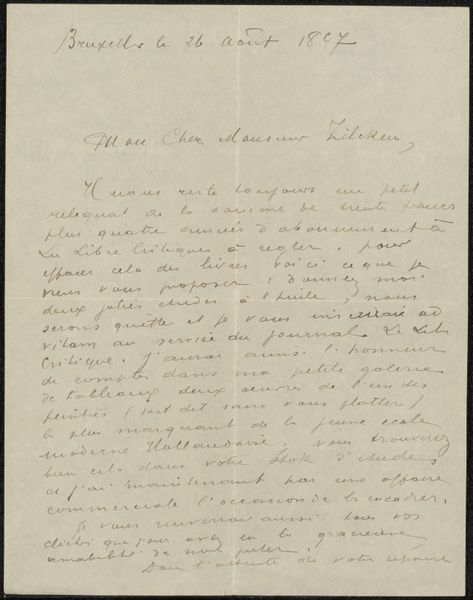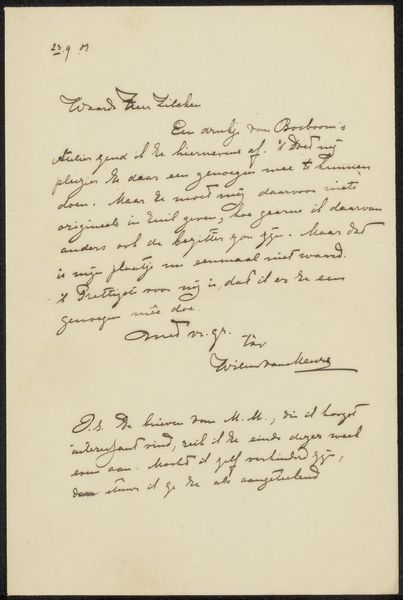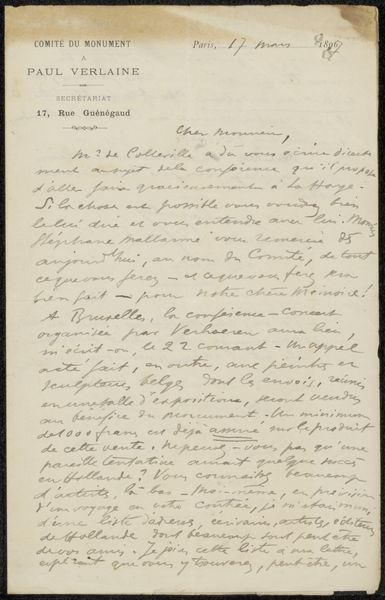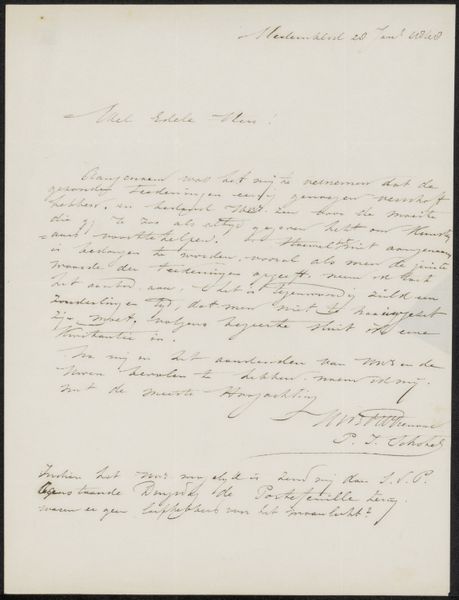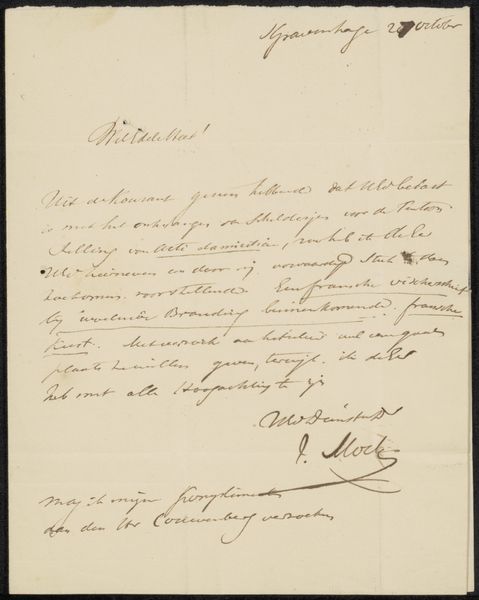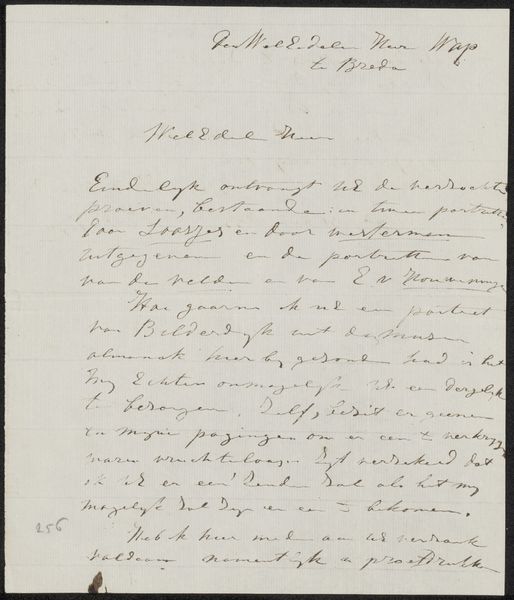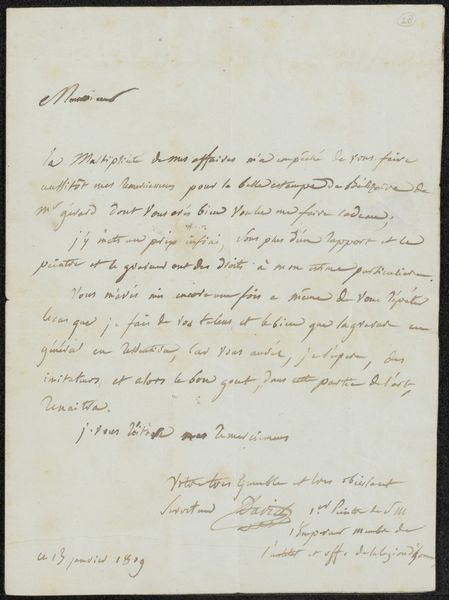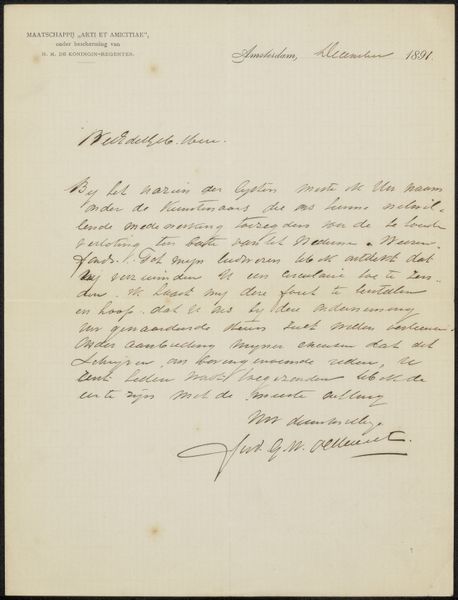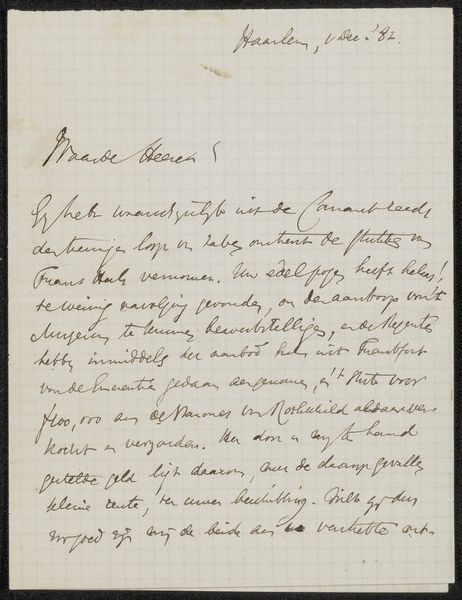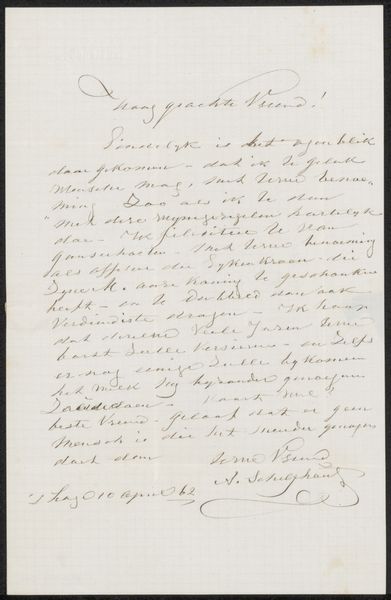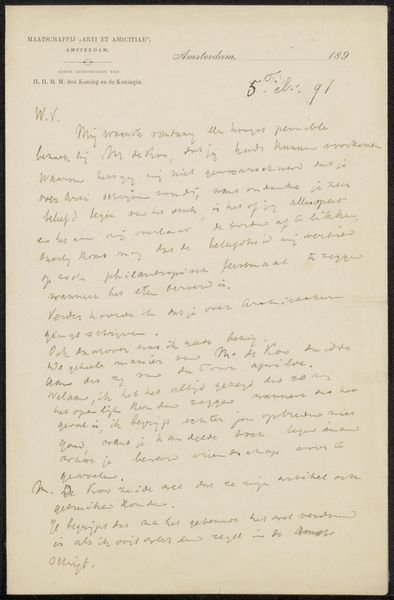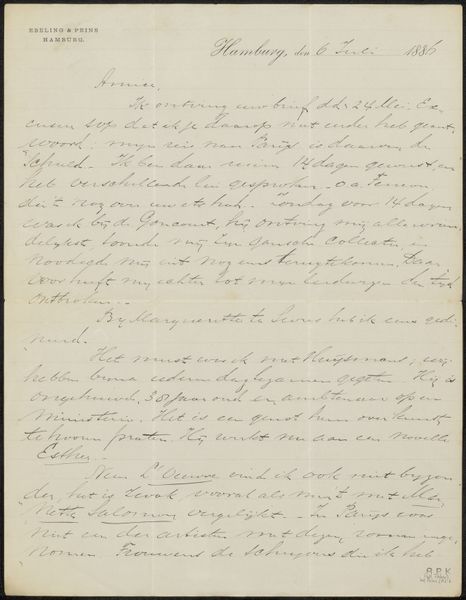
drawing, paper, ink, pen
#
drawing
#
ink paper printed
#
pen sketch
#
hand drawn type
#
paper
#
personal sketchbook
#
ink
#
ink drawing experimentation
#
intimism
#
pen-ink sketch
#
ink colored
#
pen work
#
sketchbook drawing
#
pen
#
sketchbook art
Copyright: Rijks Museum: Open Domain
Editor: Here we have Max Liebermann’s “Brief aan Jan Veth,” likely from the 1890s. It’s an ink drawing, a handwritten letter really, on paper. The script is so elegant! But something about seeing handwriting always feels so personal and intimate. What do you see in this piece, beyond the immediate impression of a letter? Curator: What strikes me is the inherent tension within this seemingly straightforward note. Liebermann, writing to fellow artist Jan Veth, invites a visit but with a subtle power dynamic. He claims not to want to encroach on Veth’s time, yet emphasizes his own anticipation. Consider the historical context: the art world then, as now, was fraught with competition and networking. Editor: So you are suggesting this is more than just a friendly note? Curator: Precisely. Look at the closing. It’s polite, but slightly formal. Knowing Liebermann and Veth were both influential figures, one in painting, the other in art criticism, reveals how even casual correspondence can be a performance. The very act of writing, the choice of words, serves a social function. We could even analyze it using Bourdieu's theories of social capital. What does this letter do to challenge assumptions you have of an artist's inner life? Editor: I hadn’t thought of it that way! So the letter itself becomes almost a piece of art, carefully constructed with a specific audience and intention. It’s a fascinating glimpse into their social and artistic positioning. Curator: Exactly. And considering intimacy as a consciously constructed effect in 19th-century social circles makes this sketch a relevant contribution to intersectional dialogues in contemporary art.
Comments
No comments
Be the first to comment and join the conversation on the ultimate creative platform.
